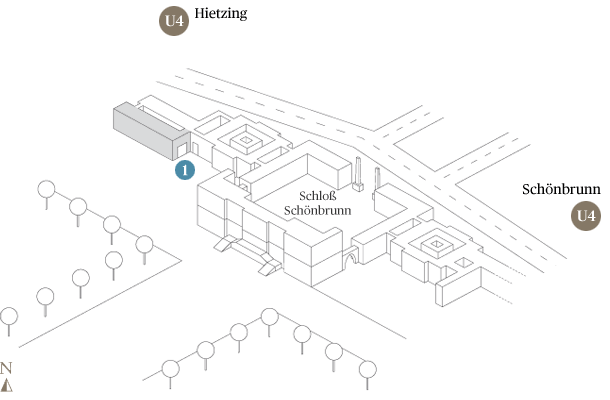
Corona’s Ancestors
Masks and Epidemics at the Viennese Court 1500–1918
The Corona pandemic has been unexpected and unfathomable in equal measure for the people of Europe. That is the case not least because we have long since forgotten that our ancestors lived in fear of epidemics for centuries. The exhibition Corona’s Ancestors is set to contribute to our wider understanding of the incisive experiences we are currently undergoing by casting a look at the past.
Unique objects – largely taken from the collections of the Kunsthistorisches Museum and the Theatermuseum – address a wide range of topics: tournament and carnival masks of the Viennese court join objects bearing witness to the great epidemics and documents on the history of vaccination as well as the Habsburgs’ impressive garments of mourning.
The great epidemics
At present, we are focusing on measures to contain the Covid-19 pandemic such as closing borders and places of entertainment, instituting trade restrictions, social distancing and strict quarantine rules. Our ancestors, too, were confronted with similar measures. The plague, smallpox, cholera and the Spanish flu afflicted Vienna and the Habsburg court in earlier centuries. The pandemics were contained and overcome, but measures and approaches to deal with such unexpected phenomena continue to shape us.
The Spanish flu claimed enormous sacrifices throughout the world between 1918 and 1920; it is the disease that bears greatest similarity to the current situation. In Austria, the fight against the Spanish flu was entrusted to the Ministry of Public Health (Ministerium für Volksgesundheit), which had only been established that very year. One of its uniforms is on show from the Department of Court Uniforms. The measures taken at the time are familiar to us today, ranging from the creation of dedicated hospital stations to the closure of theatres and schools and wearing masks.
Protected by masks
The symbol of the Corona pandemic is the mask that we use to cover mouth and nose in order to protect ourselves and those close to us from infection. Masks have played a varied role throughout the history of humanity, with medical use being only a very minor aspect. The Habsburg court encountered masks at tournaments as well as at the theatre and at boisterous dances.
Numerous members of the imperial court, including Maria Theresa, had their portraits painted with this attribute. Empress Sisi also covered her face behind an elaborate mask at funeral services to express her grief as well as to shield her ageing face from being seen by nosy onlookers. The creatively designed masks may not have served a medical function, but can still be considered the forerunners of the face masks currently in use. After all, a proper fashion in mask styles was quick to develop during lockdown.














